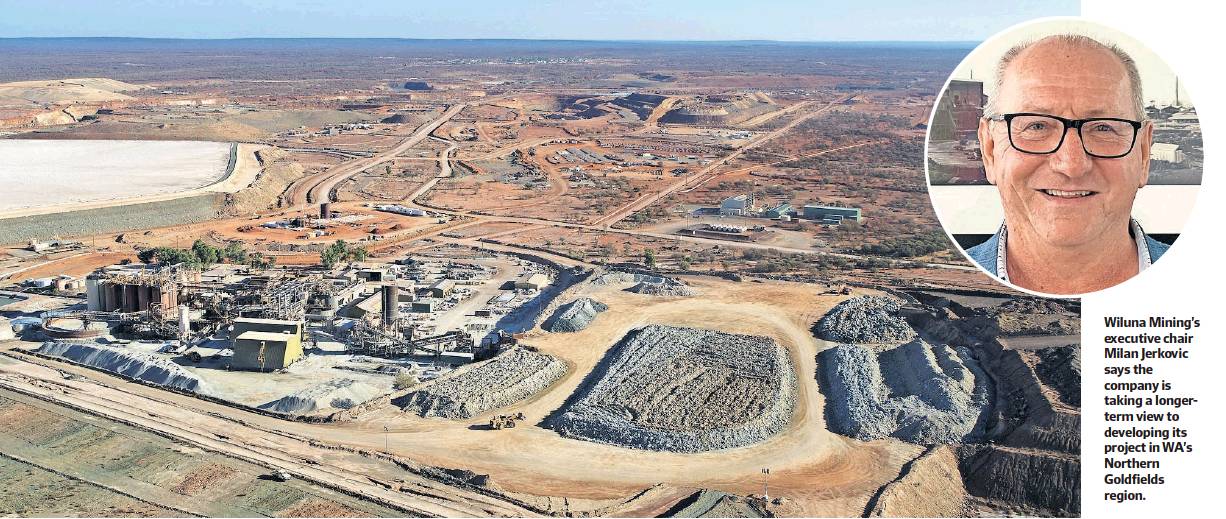Huge potential in tried and trusted site
While fears of ratcheting global interest rates have taken the gloss off the previously hard-running gold price, Australian producers are still enjoying healthy margins – despite spot bullion declining about 14 per cent since hitting a record $US2070 an ounce in August last year.
The market narrative goes that if the US Federal Reserve tapers back its bond-buying program as expected, this will spur higher interest rates. This in turn will erode the value of gold, which is not income producing, relative to risk-free cash yields.
But with gold subject to myriad influences, the ‘higher rates, lower gold’ thesis is not that simple.
As the World Gold Council explains, the negative impact from higher rates is likely to be offset by the “unintended consequences” of expansionary monetary and fiscal policies. “These may include inflation, currency debasement, and higher exposure to [riskier] assets in portfolios,” the organisation stated in its Gold mid-year outlook 2021.
The listed Australian gold sector has retreated in sync with the global bullion decline.
But as Wiluna Mining’s executive chair Milan Jerkovic notes, the explorers and developers have been devalued less than the established producers who are immediately exposed to the softening gold price.
He adds that while gold may have been oversold, the sector will recover in the next 12 months as ‘growth’ investors look to gold stocks for “real value and cash flows”.
Such a scenario would pan out perfectly for Wiluna, which is taking a longer-term view to developing its eponymous project in Western Australia’s tried-and-trusted Northern Goldfields region.
Across 1600 square kilometres of tenements, Wiluna lays claim to a well-endowed gold resource of more than 7 million ounces, with huge exploration upside.
Wiluna is typical of many mainstay WA gold mines, in that the assets were held by a succession of owners. While they achieved substantial but sporadic production, the revolving door of owners failed to invest in developing the resource.
“Over the past 30 years the various owners tried to squeeze a lemon that wasn’t fully juiced,” Jerkovic says. “It was never systematically drilled.”
Wiluna Mining eventually acquired the tenements from the administrator of Apex Minerals, for about $2.5 million.
Initially, says Jerkovic, the company also chased the easy shallow pickings without investing in drilling the main sulphide mineralisation. The company also took on too much debt at a too early stage.
The former head of coal and copper developer Straits Resources, Jerkovic came on board in an executive role to clean up the balance sheet and steer away from the “short-dated” strategy.
The result is a fully-funded phase-one strategy to increase commercial production next year, to 120,000 ounces a year.
Subject to a feasibility study, Wiluna would then move to output of 250,000 ounces by 2024 and as much as 500,000 ounces within the next five years.
The company is already producing at 50,000 ounces a year of free-milled gold dore from an open pit and small underground operation.
Jerkovic says there are few single mines with such output, one exception being Northern Star Resources’ geologically similar Jundee mine nearby.
“We are in a tier-one jurisdiction in a single location, we don’t have to mine three or four pits and feed three mills to target 250,000 ounces of production,” he says.
In April last year, Wiluna raised $60 million in equity, followed by a further $59 million this year. To fund a planned new concentrator, the company also raised an initial $21 million of debt, which has just been repaid. Subsequent to that, the company recently secured an additional $US42 million ($57 million) of debt.
Wiluna has also invested $30 million on drilling, with the aim of adding 500,000 ounces to the company’s ore reserves of 1.32 million ounces (including 661,000 ounces averaging 4.74 grams per tonne).
“The drilling is all about filling the gaps to bring more ounces per development dollar and increase the grade,” Jerkovic says. “Grade is king in the short term while we build the asset. An extra one gram per tonne means an extra 25,000 ounces a year without the need for more infrastructure.”
Meanwhile, the first phase is progressing well, with contractor GR Engineering due to complete the concentrator for commissioning by December.
The master plan for the mine envisages a new crushing and milling circuit, which would more than double capacity to 1.5 million tonnes by 2024.
Currently, Wiluna is operating on an all-in sustaining cost (AISC) of $A1700 an ounce, allowing for a comfortable margin on the prevailing spot price.
“We hope to get this AISC down to $A1500 an ounce in stage one and hopefully in stage two we’ll shave a further $200-$300 off this because of scale and higher grade,” Jerkovic says.
A decision on the second stage is due next year.
While management is conscious of not drilling out reserves ahead of what production and cash flow allows, the company intends to maintain its current drilling program at $25-30 million a year.
“This is about future-proofing or long-dating our investment in Wiluna,” he says.
With a current market valuation of a mere $150 million, Wiluna arguably is the best value operator-cum-developer in the Australian gold sector.
“There’s still plenty of value in Wiluna,” Jerkovic says.
